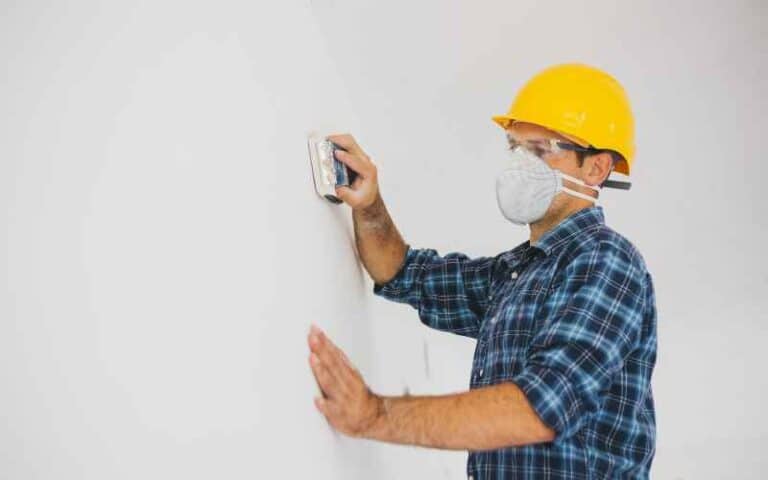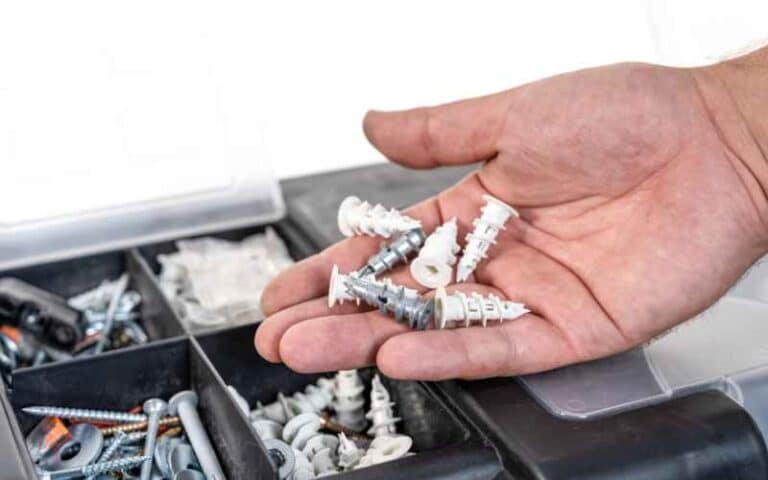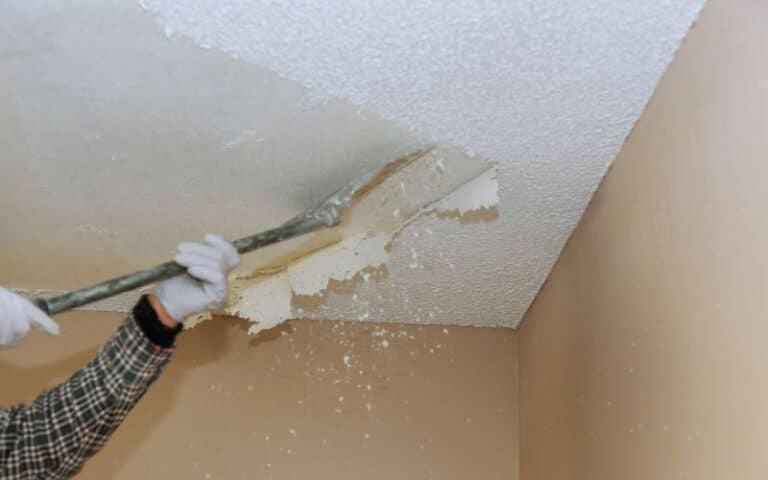Drywall is an essential building material used in construction, remodeling, and renovation projects.
Whether you are a professional or a DIY enthusiast, cutting drywall is a crucial task that requires the right tools and techniques.
Without the proper equipment and knowledge, cutting drywall can be a challenging task.
Therefore, wasted material, uneven edges, and potential safety hazards result.
This article will explore the tools and techniques necessary for cutting drywall efficiently and accurately.
Cutting drywall may seem simple, but it requires the right tools and techniques to do the job properly. Several tools for cutting drywall include utility knives, drywall saws, rotary cutters, and power saws. Each tool has its advantages and disadvantages, and the choice of tool will depend on the project’s specific needs.
Here, you’ll discover several techniques for cutting drywall, including scoring and snapping, using a saw, or using a rotary cutter.
Ready for a Drywall Quiz?
6 Best Tools for Cutting Drywall

Having the right tools is crucial to achieving a clean and accurate cut of the drywall. Each of these tools has advantages and disadvantages, depending on the task at hand.
Choosing the right tool for the job ensures a clean and accurate cut. Here are six of the best tools for cutting drywall:
#1. Drywall Saw
A drywall saw is a handheld saw designed specifically for cutting drywall.
It has a pointed tip that allows for easy starting of cuts and a long, straight blade that can quickly cut through drywall.
Unlike other saws, a drywall saw has a blade with sharp teeth designed to make clean cuts in drywall without damaging the paper surface.
Additionally, most drywall saws have a pointed tip that allows for easy starting and cutting of holes in the middle of drywall.
Here are the pros and cons of using a drywall saw:
#1. Pros
- Specifically designed for cutting drywall
- Precise cuts and clean edges
- Can cut holes for outlets, switches, and fixtures
#2. Cons
- It can be difficult to control for beginners
- Tends to create a lot of dust
#2. Utility Knife
A utility knife is a versatile cutting tool that can be used for a variety of tasks, including cutting drywall. It works best for making smaller cuts and trimming edges.
A utility knife is also one of the best tools for cutting drywall because it is versatile, easy to use, and readily available.
Here are the pros and cons of using a utility knife on your drywall:
#1. Pros
- Inexpensive and easy to find
- It can be used for various cutting tasks
- Cuts straight lines easily
#2. Cons
- It may not be effective for cutting thicker drywall
- The blade may need frequent replacement
#3. Jab Saw
A jab saw is a type of handsaw with a pointed tip that is ideal for making plunge cuts in drywall. It can cut out holes in electrical boxes or light fixtures.
Jab saw is one of the best tools for cutting drywall because of its ability to make precise cuts in tight spaces where other larger tools cannot fit.
The long, narrow blade of the jab saw is designed to cut through drywall quickly and efficiently.
Below are the benefits and cons of using a jab saw for cutting drywall:
#1. Pros
- It can be used for cutting drywall, and other materials.
- The long blade allows for cutting in tight spaces
- Can make plunge cuts
#2. Cons
- It may be difficult to control for beginners
- Tends to create a lot of dust
#4. Rotary Tool
A rotary tool can be fitted with a drywall cutting bit and used to make precise cuts in drywall. It is especially useful for cutting curves or intricate shapes.
Here are the pros and cons of using this tool:
#1. Pros
- Can make precise cuts and create intricate shapes
- It can be used for other tasks, such as sanding and grinding
- Can cut through thicker drywall
#2. Cons
- Expensive
- It can be difficult to control for beginners.
- Dust and debris can be a safety hazard
#5. Power Saw
Power saws, such as jigsaw or circular saws, can also be used to cut drywall. They are faster and more efficient than handheld saws but require more setup and safety precautions.
However, they are ideal for larger projects and can easily cut through thick sheets of drywall.
Additionally, some power saws have dust collection systems that can help minimize the amount of dust generated during cutting.
#1. Pros
- Can handle thicker drywall and other materials.
- Allows for more precise cuts than hand tools.
- Saves time and effort compared to manual cutting.
#2. Cons
- Expensive
- Requires access to electricity or a charged battery.
- It can create a lot of dust and debris.
- It may require more experience and training.
#6. Rotozip
A Rotozip is a handheld tool that uses a high-speed cutting bit to quickly and accurately cut through drywall. It is handy for making cuts for electrical boxes or other fixtures.
#1. Pros
- Can cut through various materials, including drywall, metal, and tile
- Can create intricate shapes and designs
- Has a dust collection system to minimize mess
#2. Cons
- Expensive
- It can be difficult to control for beginners
Best Methods for Cutting Drywall
Cutting drywall can be a daunting task for both DIY enthusiasts and professionals. However, it can be a relatively easy job with the right tools and techniques.
Here are some of the best methods for cutting drywall:
#1. Score and Snap Method
It’s the most common and easiest method. You need a utility knife and a straight edge to use this method.
Place the straight edge along the line you want to cut and score the drywall with the utility knife along the straight edge. Once the drywall is scored, snap it along the line.
#2. Rotary Tool Method
A rotary tool with a cutting bit can make precise cuts in drywall. This method is ideal for cutting curves, circles, and intricate shapes.
For this method, mark the line you want to cut on the drywall and then use the rotary tool to cut along the line.
#3. Power Saw Method
A power saw, such as a circular or a jig saw, can quickly and efficiently cut drywall. This method is ideal for cutting large drywall pieces or making long, straight cuts.
For this method, mark the line you want to cut on the drywall and then use the power saw to cut along the line.
Overall, the best method for cutting drywall depends on the specific project and the individual’s experience and skill level.
For simple cuts, the score and snap method is usually sufficient. A power saw or rotary tool may be best for more intricate cuts or large projects.
When cutting drywall, it is important to take the appropriate safety precautions, such as wearing eye and ear protection and a dust mask.
It is also important to measure and mark the cut lines accurately before cutting and to use a straight edge to guide the cuts.
With these tools and techniques, cutting drywall can be straightforward and easy.
Do You Need a Professional to Cut Drywall?
You do not necessarily need a professional to cut drywall. Cutting drywall can be done by a DIY enthusiast with the right tools and techniques.
However, if you are unsure of your ability, it may be best to hire a professional to ensure the job is done correctly and efficiently.
Moreover, if you are working on a project that involves electrical work, it is important to ensure that you have the necessary knowledge and training.
Additionally, if you are working on a project requiring intricate cuts or unique angles, a professional must complete the job to your satisfaction.
Here’s a table showing some pros and cons of cutting drywall yourself vs. hiring a professional.
| Cutting Drywall Yourself | Hiring a Professional |
|---|---|
| Pros | |
| Cost-effective | Expertise |
| Control | Time-saving |
| Cons | |
| Time-consuming | Cost |
| Lack of expertise | Scheduling |






